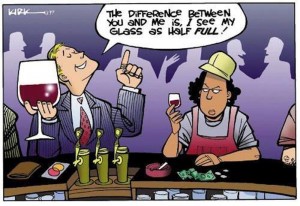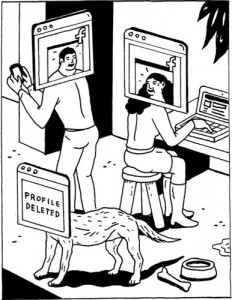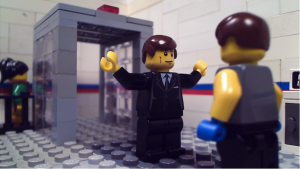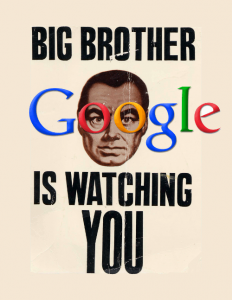Pg. 156
In an attempt to show off his new, youthful girlfriend, Lenny eagerly escorts Eunice to Family Night with his friends and their partners. The six of them are all getting acquainted in the Cervix when Vishnu suddenly calls out. There is a break out riot taking place in Central Park. The inhabitants of the bar scramble for their äppäräti as recent photographs from the scene come streaming in. A family is sprawled across the ground, lifeless. Aziz, the unemployed bus driver, lies with a bullet hole in his forehead and eyes rolled to the inside of his head. Eighteen people shot and killed.
I chose this image because the scene within it depicts privilege (and also coincidentally takes place in a bar). It stood out to me that in the midst of all this darkness and death occurring, Lenny has this to say: “Finally, the fear and the empathy were replaced by a different knowledge. The knowledge that it wouldn’t happen to us…That we were of good stock.” Though he started out empathetic and fearful, Lenny’s emotions quickly transformed to ones of reassurance once his privilege kicked in and ensured him that nothing like that could ever happen to people like them. A similar form of privilege surfaced in Eunice earlier (pg. 146) when she was messaging her friend and telling of the “Low Net Worth Individuals” she witnessed in Tompkins Square. After one man by the name of David tried to make a connection with her by claiming “we’re all in this together”, Eunice thinks to herself, “I wish things were better for you, but we’re not all in this together.” (She must not have been an HSM fan.)





